Blender – test of CPU, CUDA and Optix
Lenovo Legion is no longer a start-up brand, quite the contrary. In recent years, it has gained a strong position among gaming brands such as Asus, MSI and Gigabyte. This is mainly due to gaming tournaments, where we see Legion quite often, but especially on the gaming laptop market. The new flagship Legion 7i must not only resume where its great predecessor left off, but also beat strong competition.
Blender – comparing CPU and GPU
We are introducing a new type of test in which we want to show you the differences between CPU and GPU rendering and at the same time take a closer look at thermal management, clock and power draw in practice and not just the maximum or average values as in the previous pages.
So we’re comparing the course of the BMW test in the latest version of Blender, where in addition to the classic CPU and GPU render using CUDA, we also have the opportunity to use the new Nvidia OptiX, which uses the new hardware resources of RTX graphics cards. While CUDA works with shaders, OptiX also uses RT cores and tensor cores for acceleration. Such a more complex involvement of computing units brings higher performance and efficiency is at a better level. At the same time, the application support is already quite decent and comprehensive. For an overview of the editors supported by the Optix API, see the Nvidia website. Nvidia is serious about this interface and has been developing “studio” drivers for some time, in addition to game ready drivers, which are better and faster optimized for changes in supported applications.
In the first graph, you’re looking at the progress of the CPU clock during rendering. The classic CPU mode starts somewhere around 4100 MHz and decreases towards 3600 MHz, where it remains until the end of the test. Cuda recorded an even larger drop in clock, at about 3.4 GHz, while OptiX more or less stays around 4.4 GHz.
The CPU Package power draw shows that the CPU mode at full load takes about 90 W. CUDA gradually decreases from the initial value of 100 W to somewhere around 70 W. OptiX starts at about 65 W and gradually decreases to about 50 W.
Very important is the graph of the processor temperature where we see that the notebook maintains the maximum stable temperature at about 95 degrees. In connection with power draw and clock, it can be said that the notebook excellently resists thermal throttling and we do not see any performance drops, which could not be said about the competition.
The GPU load in CPU mode is practically minimal, on the contrary, in CUDA and OptiX you can see full load.
The load also corresponds to the clock, where it is interesting that at OptiX it holds at 1900 MHz, while in CUDA you can see a lower clock at around 1.7 GHz. Of course, the CPU is at minimum, as it is not used.
Power draw of the GPU copies graphs of load and clock, but with one difference. CUDA now has a higher power draw, around 90 W, while OptiX stays at about 80 W. In CPU mode, the power draw is practically zero.
Finally, a glance at GPU temperatures. A straight line with no large fluctuations with 53 degrees is visible in the CPU. A large part of the chip is used in CUDA and therefore the temperature rises above 65 degrees Celsius. In contrast, the curve stops just above 60 °C with OptiX and the temperature curve itself is less steep. This is logical, as smaller part of the chip is used, which does not create such a load.
The differences between the modes in Blender are considerable. The fastest is OptiX as expected with a value of 44 seconds. For comparison, Asus had 42, MSI 43 and HP 47 seconds. CUDA is 39% slower with a time of 61 seconds. Asus also had 61 seconds, MSI was slower with a time of 65 seconds. HP with a 6-core had 72 seconds. CPU render is naturally the slowest with 242 seconds. Differences against the competition can be seen here, too. MSI had 251 s, the M15 285 s and HP up to 367 s. The 8-core i7 Legion therefore delivers respectable results.
- Contents
- Specs and details
- Testing methodology
- Display tests
- Rendering and Geekbench
- 3D/PCMark and Unigine Heaven/Superposition
- Gaming tests – dedicated GPU
- Encryption, encoding
- Memory and storage tests
- Temperatures and battery life
- Blender – test of CPU, CUDA and Optix
- Performance modes
- Utility app
- Rating





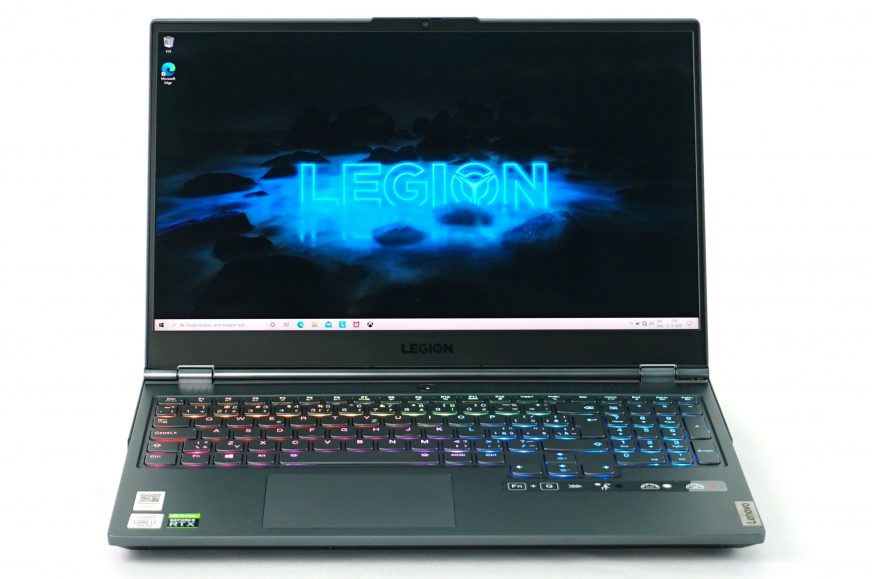
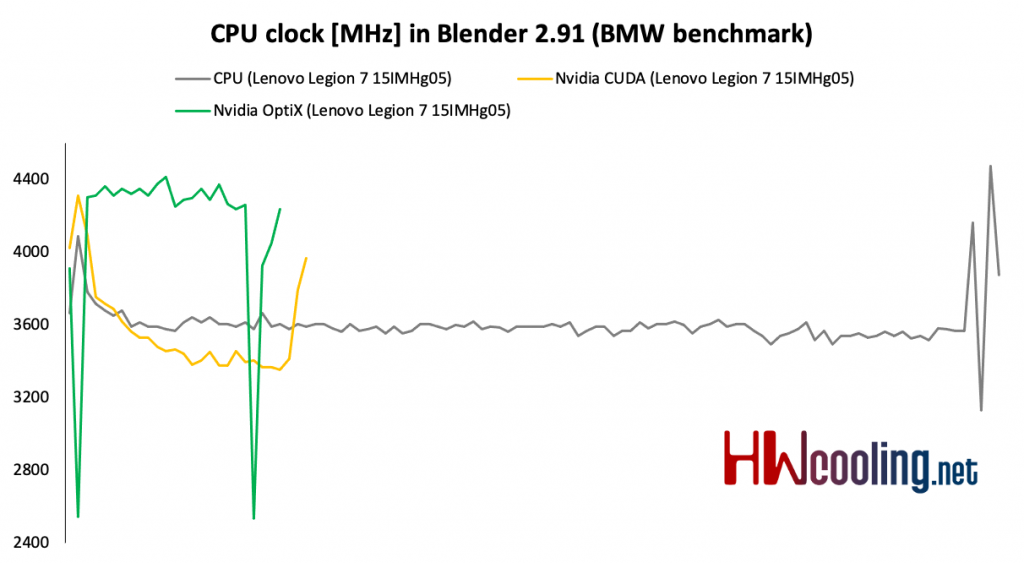

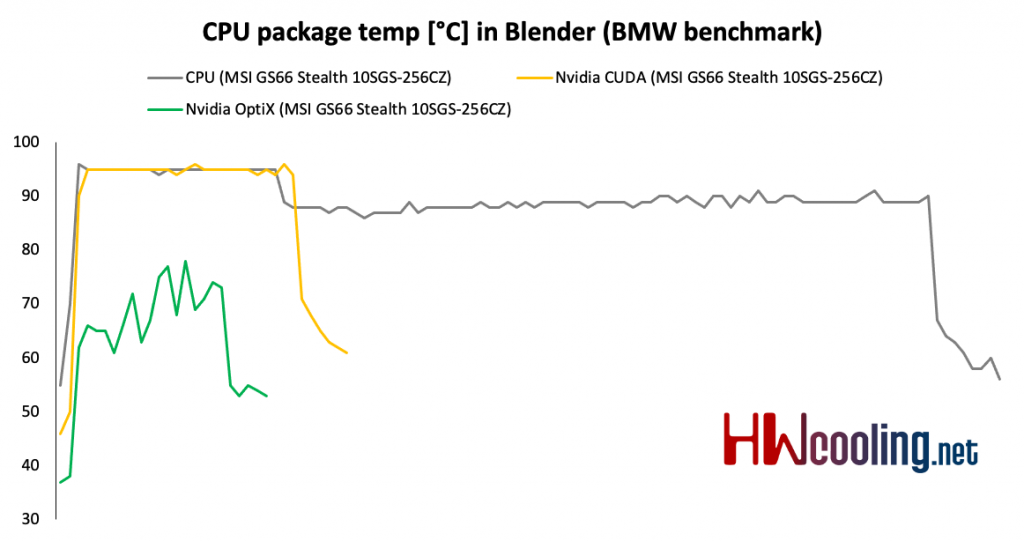

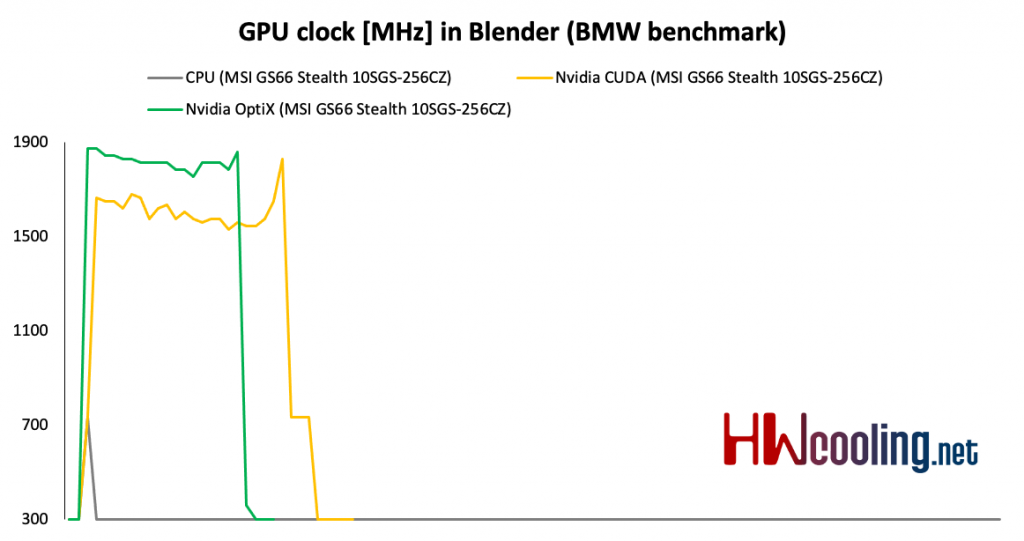
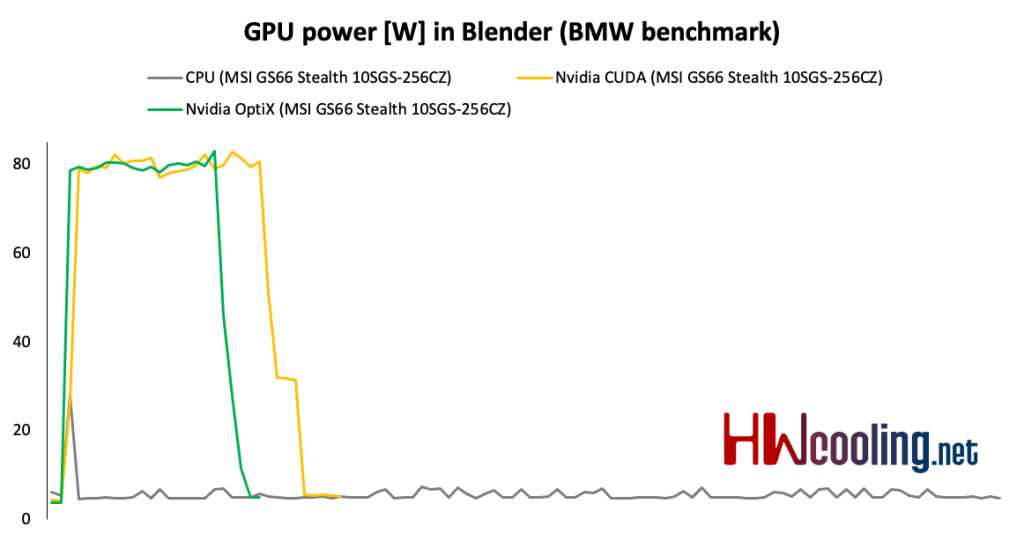
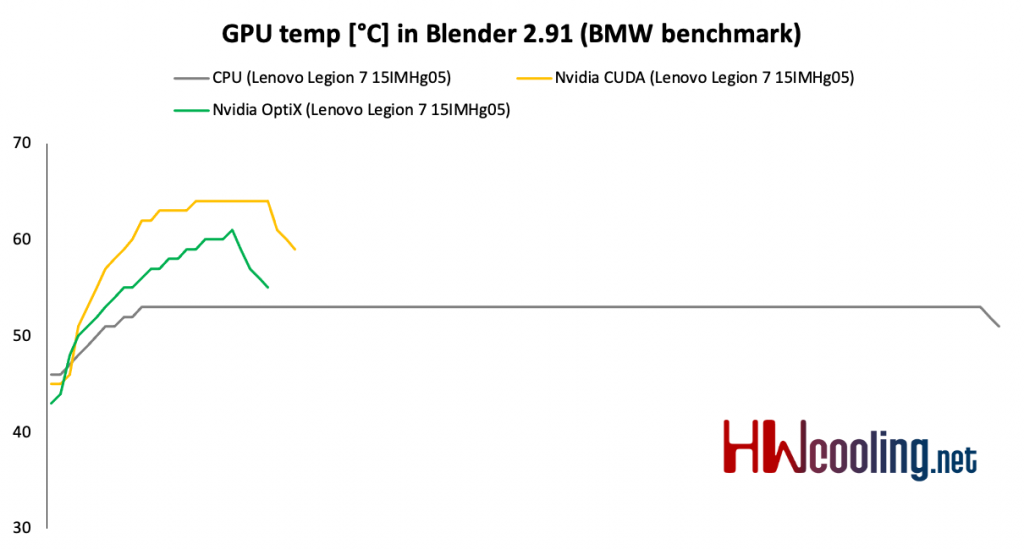



do not buy this laptop is given, even the hinges of the screen and lenovo does not give warranty. They do not have the solution